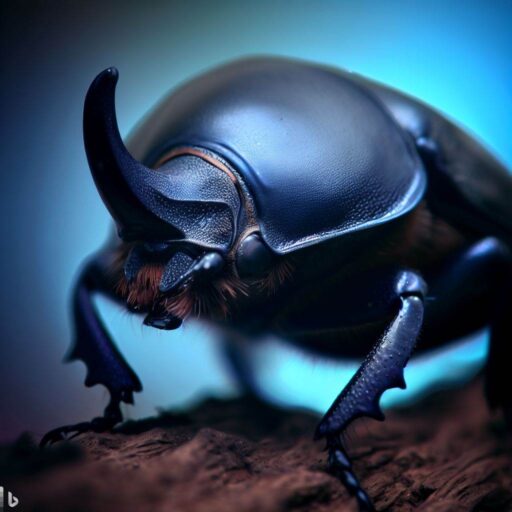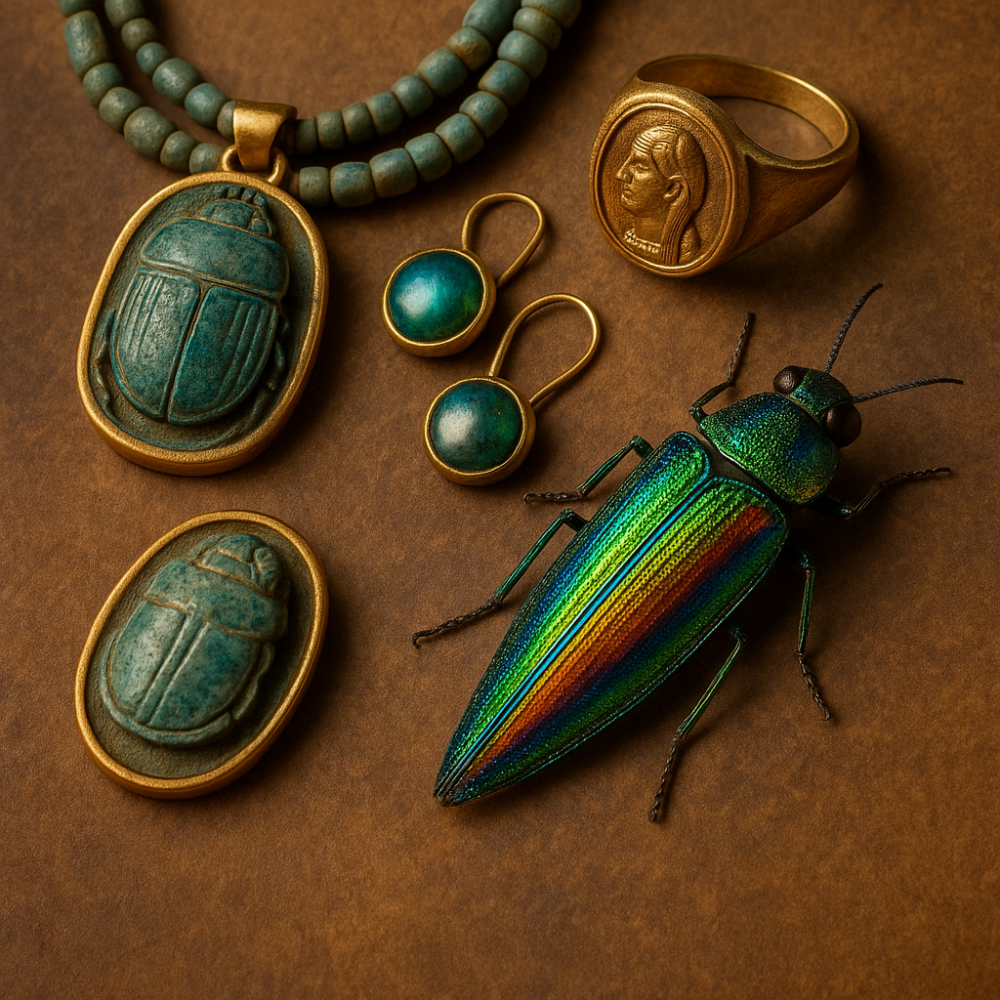.jpg)
– June bugs munch on a variety of plants, including leaves, fruits, and flowers.
– Their feeding habits can cause damage to plants and crops, leading to economic losses for farmers.
– Natural predators, such as birds and mammals, help control the population of June bugs.
June bugs are a species of beetle that buzz around in North America during summer. They are also known as June beetles or June bug beetles.
June bugs have an important role in the ecosystem. They provide food for animals and birds by eating plants and fruits. They feast on tender leaves of trees and shrubs, and love ripe fruits like cherries, peaches, and plums.
This feeding habit can damage crops and gardens, making them a nuisance. Yet, June bugs also help in the natural process of decomposition. They consume dead plant material and break down organic matter, enriching the soil.
They can consume large quantities of leaves and fruits, sometimes causing defoliation in certain plants.
These bugs create conflicts with humans, but they are essential for the natural cycle and maintaining the balance of ecosystems.
They are called “Phyllophaga” in the scientific community. (source: Missouri Department of Conservation)
Life Cycle of June Bugs

The life cycle of June bugs is a fascinating journey that encompasses the stages of larvae, mating and egg laying, as well as the transformation into pupae and adult June bugs.
Delving into this remarkable process will unveil intriguing facts and insights about these creatures’ growth and development.
June bug larvae
June bug larvae are the immature stage of insects. They molt several times as they grow and develop. They have a white, fleshy C-shaped body.
They live underground, feeding on plant roots. This causes damage to crops and plants, making them pests. They spend one to three years in this stage, depending on environment conditions.
June bug larvae create tunnels and burrows, obstructing plant growth. They are more vulnerable to predation in the larvae stage than as adults. This helps keep their population in balance.
Factors such as soil moisture, temperature, and food sources influence the duration of the larval stage. Understanding the behavior of these larvae is necessary for effective pest management strategies to minimize their negative impact on agriculture and horticulture.
Mating and egg laying
June bugs search for mates with pheromones. If a suitable one is found, the male and female engage in courtship behavior. This includes antennae touching and synchronized flying.
Then, the female will lay eggs. Depending on the species, that can range from a few dozen to hundreds. The eggs are usually small and white, and they hide underground or in organic matter.
Reproduction is vital for June bug populations. To understand this stage, researchers examine their behavior and preferences during courtship and egg laying.
That way, they can develop strategies to control population size. This includes disrupting reproduction cycles or deterring June bugs from certain areas.
All of this helps to protect plants and crops from damage while also maintaining the ecological balance.
June bugs: from larvae to flying menace. It’s like a horror movie sequel!
Transformation into pupae and adult June bugs
June bugs have a unique life cycle. From larvae to pupae and then to adult June bugs. The larvae feed on plant roots, mostly grasses. They then form a protective casing and transform into pupae.
This casing helps them change into an adult June bug.
This transformation is crucial for the survival of the species.
Once in adult form, they mate and lay eggs. June bugs come in all shapes, sizes, and levels of annoyance.
Pro Tip: If you find pupa casings, don’t disturb them. They are essential for the continuation of the life cycle.
Species of June Bugs

June bugs are a type of beetle found in North America. They are part of the Scarabaeidae family, with many species. They are known for their big size and tough wing covers. Types of June bug include: green, brown and grapevine.
Regarding physical attributes, June bugs vary in size, color and behavior. The green June beetle or green June bug is iridescent green, the brown is dull brown to reddish brown and the grapevine has red-brown and black spots.
Each species also has different habits for feeding and breeding.
To compare the June bug species, a table can be made. Include columns for species name, size, color and habitat. This will make it easier to see differences between species.
An interesting fact about June bugs is that they are attracted to light. They often fly around porch lights at night. This can be annoying for homeowners.
Also, June bugs are herbivores and love eating plants and fruits, especially ripe or decaying ones. This can be a problem for crops and gardens.
Pro Tip: To reduce June bug numbers, use screens or netting around porch lights. Also, keep gardens clean and well-maintained to stop them from being attracted to decaying fruit and vegetation.
Feeding Habits of June Bugs
June bugs, also known as June beetles or May beetles, possess unique eating habits which contribute to their ecosystem.
They particularly enjoy consuming leaves, fruits, and flowers, with roses, grapes, apples, and strawberries being favorites. Plus, they have a draw to light sources, resulting in them munching on trees and other vegetation in urban areas.
The feeding habits of June bugs are paramount for their life cycle and survival. They use their specialized mouthparts to eat plant tissues, leaving distinctive marks on the leaves or fruits they consume.
This also aids in pollination, transferring pollen from flower to flower, and thereby maintaining biodiversity and sustainability.
However, June bugs’ affinity for light sources can be troublesome for them and humans. When they are attracted to artificial lights, they may end up devouring the leaves of trees or plants in the vicinity.
This can lead to damage of urban greenery and an imbalance in nature. Additionally, while trying to reach the light source, they may accidentally fly into windows or other structures, causing harm.
Knowing their feeding habits can help prevent these predicaments and safeguard both the beetles and the environment.
Interestingly, June bugs have a long-standing history of helping with natural pollination. Their preference for flowers allows for cross-pollination of various plant species, which is necessary for the continuation of numerous plant communities.
This interaction between June bugs and flowers is essential for safeguarding the balance and diversity of our natural world.
The eating habits of June bugs not only affects their own survival, but also has far-reaching implications for the entire ecosystem.
Impact of June Bugs on Plants and Crops
June bugs can wreak havoc on plants and crops. They feast on the leaves of elm, oak, and ash trees, causing defoliation and stunting the growth of vegetation.
White Grubs, the larvae of June bugs, also feed on the roots of grass and various crops, like corn, wheat, and soybeans. This can lead to bare spots in lawns and reduced crop yields.
It’s important to remember that June bugs are not the only factor affecting plant and crop damage. Weather conditions, diseases, and other pests can also play a role.
But the presence of June bugs can make plants more vulnerable to these stressors.
Therefore, it is essential that growers and gardeners take action to minimize the damage caused by June bugs. Control strategies must be implemented to protect the health and productivity of vegetation.
June Bugs and Human Interaction
June bugs, also known as June beetles, are insects from the Scarabaeidae family. They arrive during the summer months and are known for their large size and loud buzzing sound.
These bugs don’t have a direct effect on humans, but their presence can be an annoyance.
June bugs are attracted to light sources. So, they can gather around outdoor lights and windows, which can be bothersome for homeowners. Plus, their buzzing sound can be irritating when many are present.
June bugs don’t directly harm humans, but they can cause damage to plants and crops. They feed on vegetation, like the leaves and fruits of trees, shrubs, and flowers.
In some cases, they can cause significant damage to agricultural crops. Therefore, farmers and gardeners often take measures to protect their plants.
To prevent or reduce June bug infestations, turn off outdoor lights at night. This deters the bugs from gathering near windows and doors. Also, use screens on windows and doors to stop them from entering homes.
Natural Predators of June Bugs

June Bugs, a.k.a. May beetles or June beetles, have natural predators that help regulate their population. These predators contribute to sustaining the ecological balance of their habitats through preying on these insects.
- Birds like starlings, robins, blackbirds, and sparrows have adapted techniques to catch and consume June bugs in flight or on the ground.
- Bats also feed on these bugs. They use echolocation to find and capture their prey, including June bugs.
- Small mammals such as mice, shrews, and moles hunt down June bugs at night.
- Turtles, lizards, snakes, and frogs eat June bugs too. They help keep their population in check in their ecosystems.
Interesting fact: June bugs use light as a defense mechanism to distract predators. But, natural predators remain essential to controlling their numbers.
Once upon a time, in a suburban area, June bugs were a real nuisance – ruining gardens and crops. To fix this problem, locals provided birdhouses and bird feeders, which attracted bird species that feed on June bugs.
Result? Their population decreased, and the community was relieved! An eco-friendly solution that returned the balance.
Methods to Control June Bug Population
To keep June Bugs at bay, several methods can be used. These help reduce their bad effects on nature and farming.
- Biological controls: Introduce natural predators, like nematodes or milky spore. They eat the larvae or pupae of June Bugs, cutting down their numbers.
- Cultural controls: Change the environment to make it less favorable for June Bugs. For example, get rid of decaying vegetation and maintain lawns.
- Physical barriers: Put screens or nets to stop adults from reaching plants. This is great for crops and garden plants.
- Chemical controls: Use insecticides, but be careful to protect other beneficial insects and the environment.
- Pheromone traps: Trap male June Bugs with pheromones. This disrupts their reproduction and reduces their population.
- Crop rotation: Change the location of vulnerable plants yearly. June Bugs are unlikely to lay eggs if their favorite food isn’t there.
Combining methods is better than relying on one. Monitor the bug population to see if the control methods are working. Make adjustments if needed.
Some June Bug Facts:
- ✅ June bugs, also known as May beetles, eat almost any plant, including leaves, grass, crops, trees, fruits, and vegetables.)
- ✅ Different species of June bugs have different feeding habits, with the green fruit beetle preferring ripe fruits and the Japanese beetle being interested in strawberries and peppers.
- ✅ June bug larvae, called grubs or white grubs, are more dangerous to plants than adult specimens, as they feed more often and eat larger amounts of food.
- ✅ June bugs can cause massive damage to gardens, lawns, pastures, and crops by eating roots and diminishing soil fertility. )
- ✅ June bugs are harmless to humans and pets as they do not bite or sting and are not carriers of diseases.
FAQ
What do June bugs eat?
June bugs are pests that feed on almost any plant, including leaves, grass, crops, trees, fruits, and vegetables. They can destroy gardens, lawns, pastures, and crops by eating roots and causing the soil to become less fertile.
Different species of June bugs have different feeding habits, such as the green fruit beetle preferring ripe fruits and the Japanese beetle being interested in strawberries and peppers.
Do June bugs eat walnut trees?
Yes, June bugs can feed on walnut trees. They are known to eat the leaves and can cause damage to the tree if their population is not controlled.
What is the mating ritual of June bugs?
The mating season for June bugs begins in mid-to-late summer. Female June bugs lay 50-200 eggs in the ground. The eggs hatch in 3-4 weeks, and the larvae stay underground for 3 months to 3 years, feeding on grass and plant roots.
Do June bugs produce sound?
No, June bugs don’t produce sound. They communicate by rubbing their mouths and limbs together.
Do June bugs eat oak trees?
June bugs can feed on oak trees. While they may not prefer oak trees, they can still cause damage to the leaves and roots if their population is high.
What are some fun facts about June bugs?
– June bugs are also known as May beetles.
– They have barbed legs that allow them to stick to surfaces.
– Different species of June bugs include the Ten-lined June beetle, Green June beetle, Common June bug, European chafer, Masked chafer, and Black turfgrass ataenius beetle.
– June bugs are harmless to humans and pets, as they do not bite or sting and are not carriers of diseases.
– They are attracted to bright lights and places with an abundance of food sources, such as fertile soil, lawns, gardens, and pastures.
– Natural predators of June bugs include skunks, raccoons, snakes, frogs, toads, nematodes, and parasitic wasps.





Leave a Reply